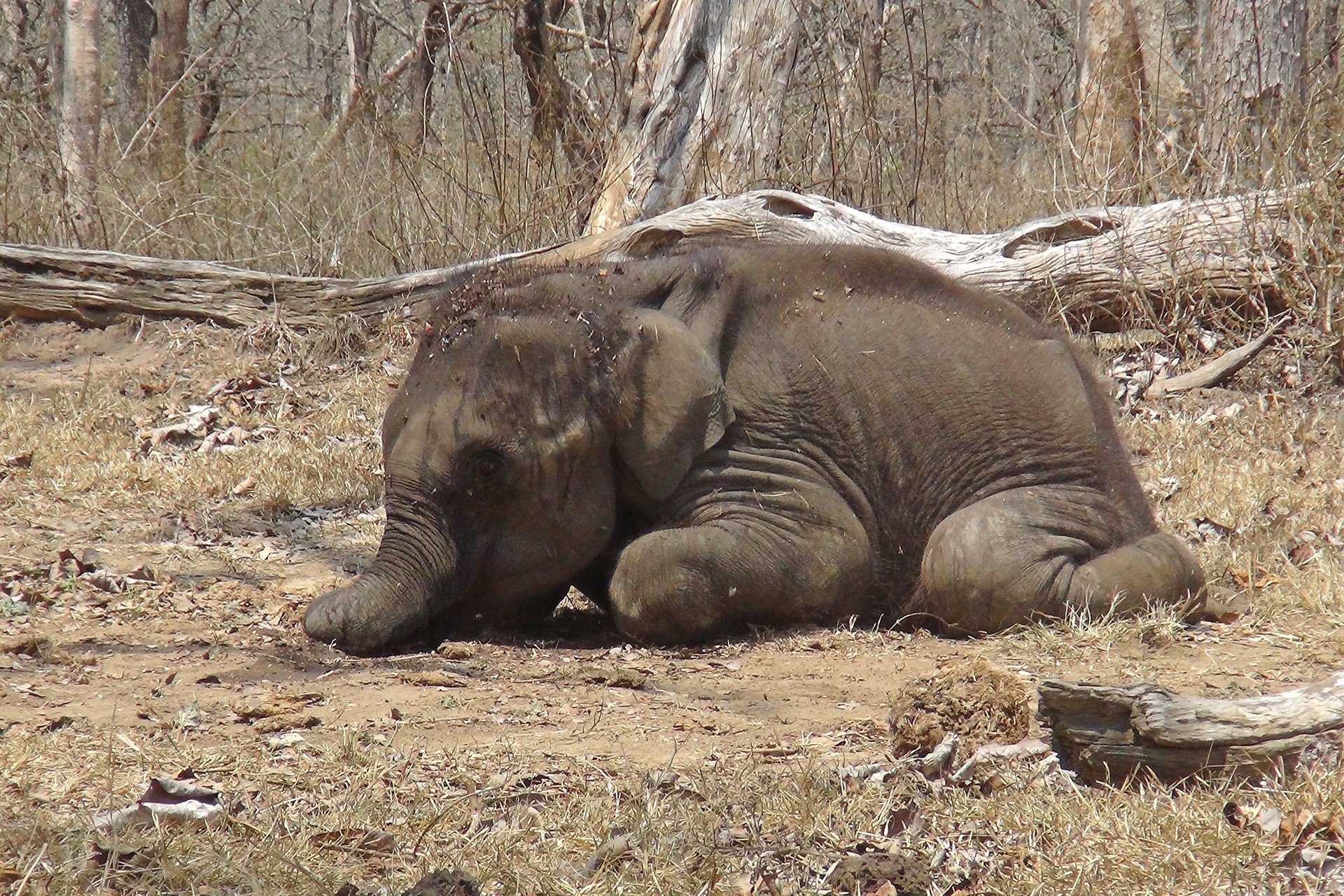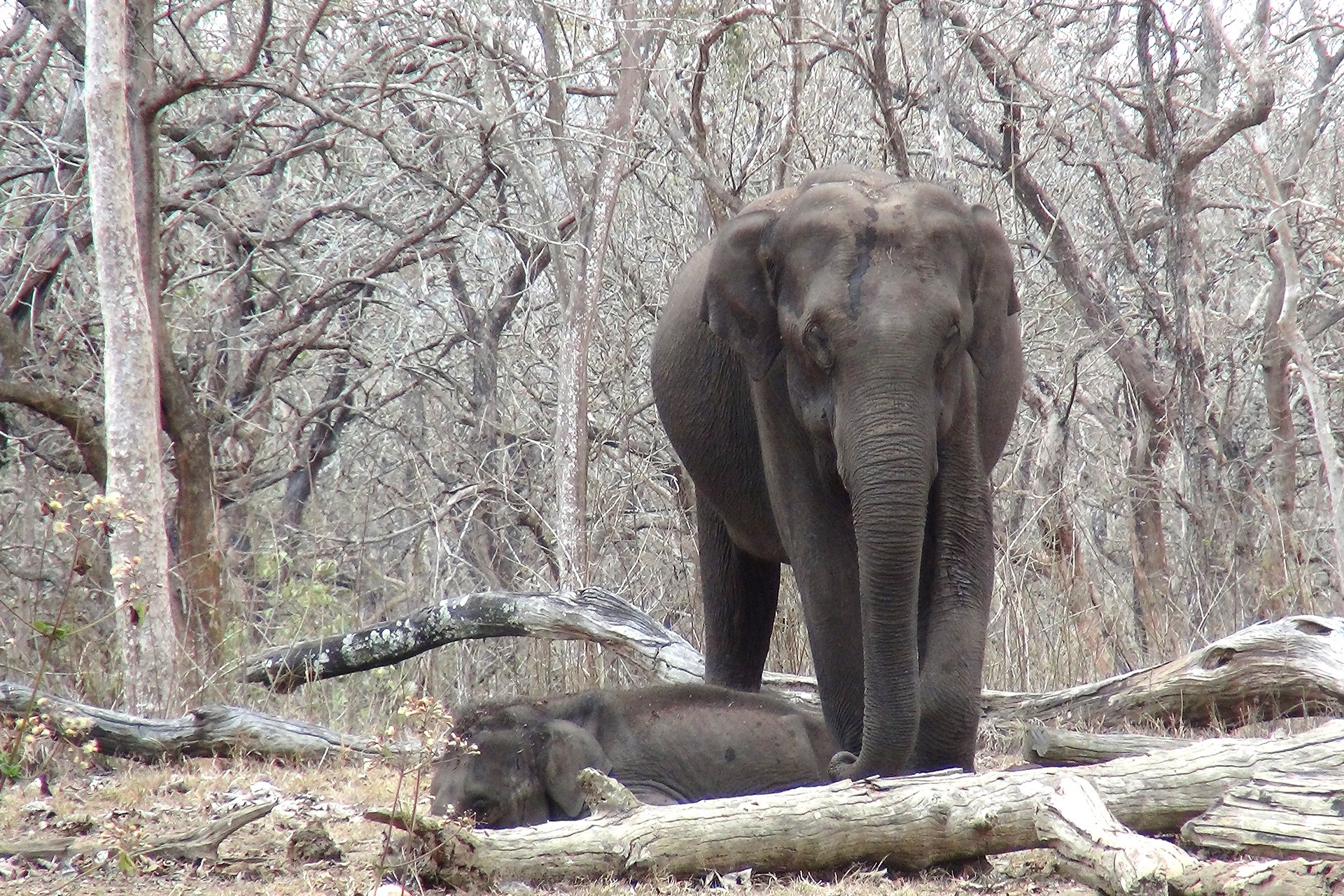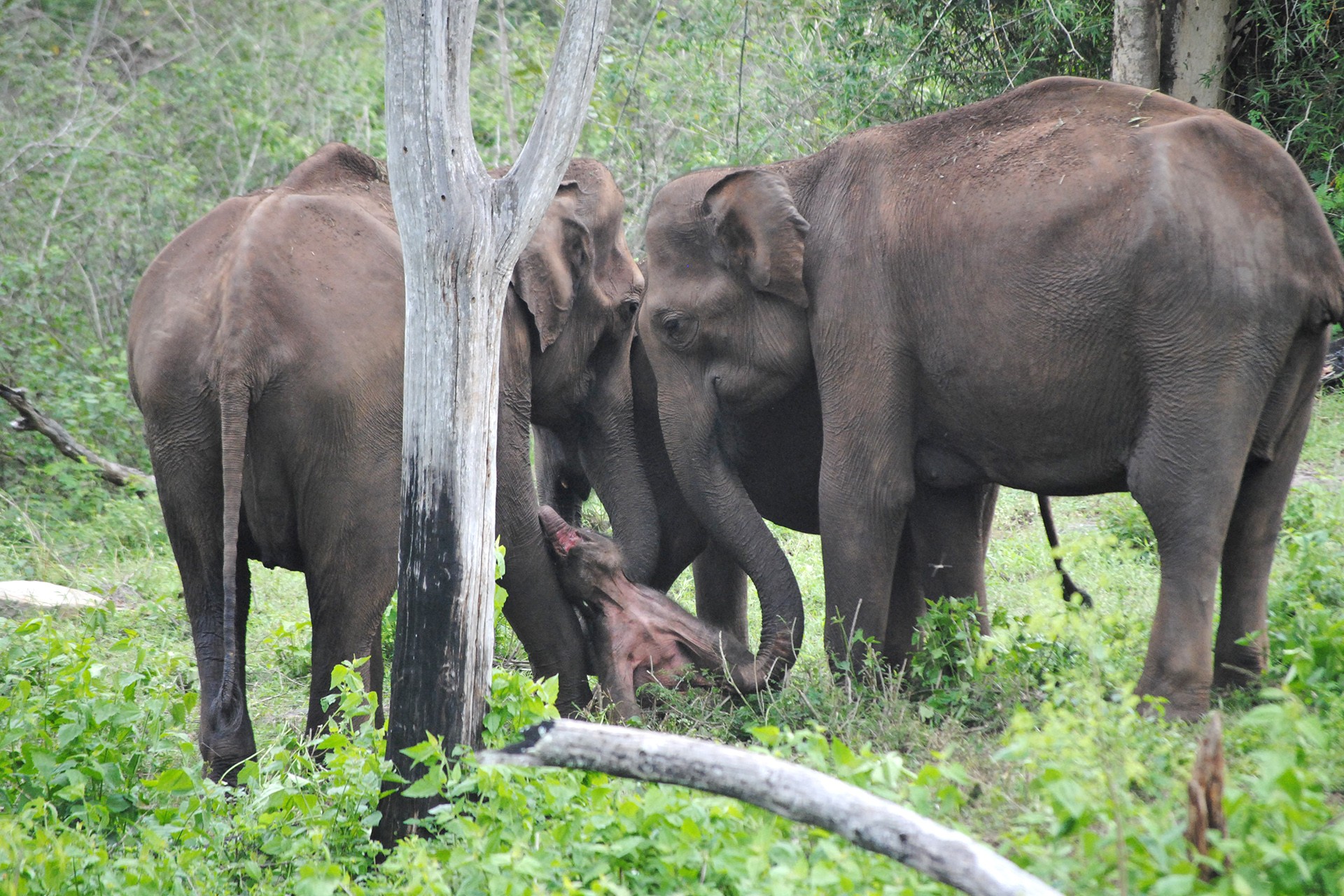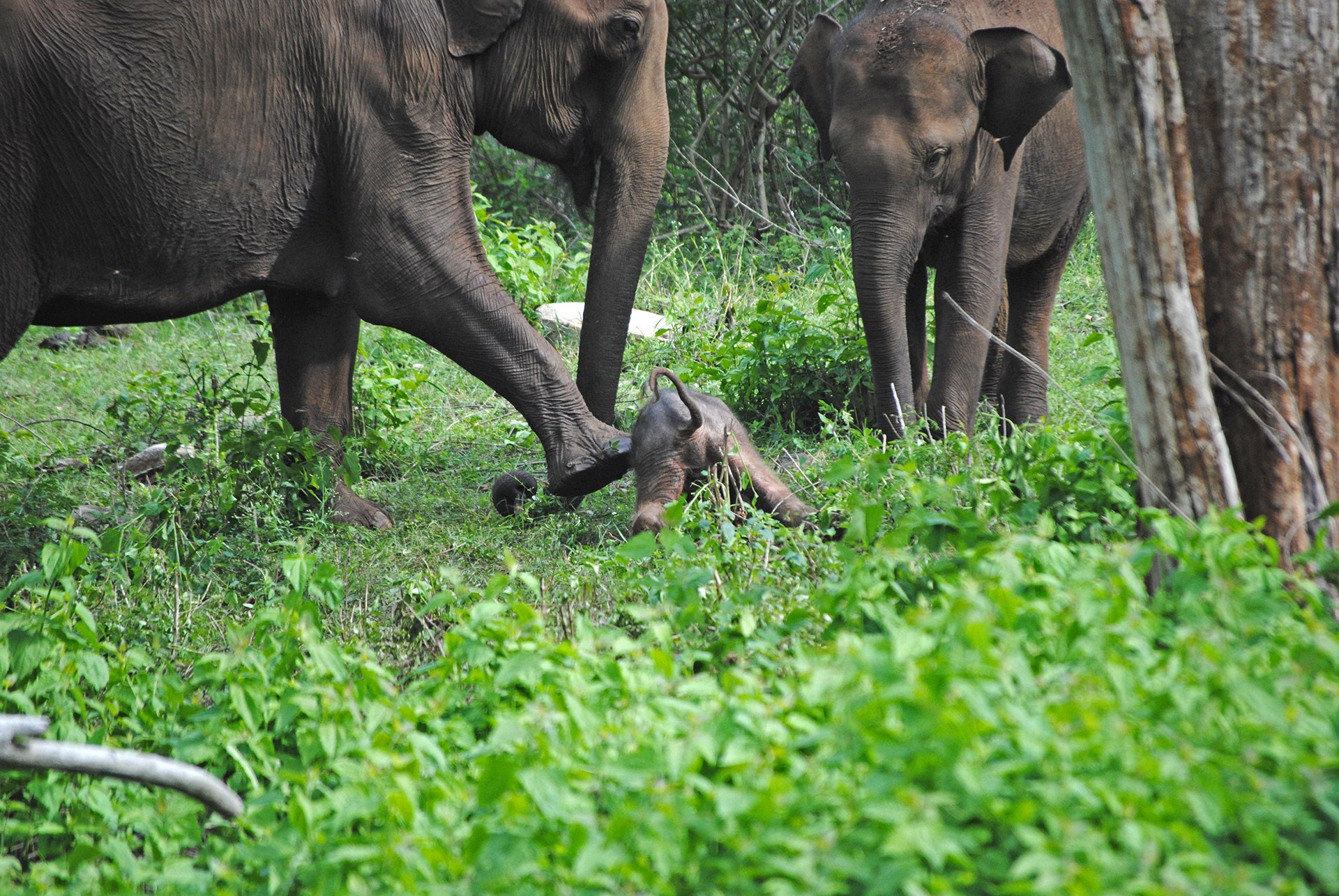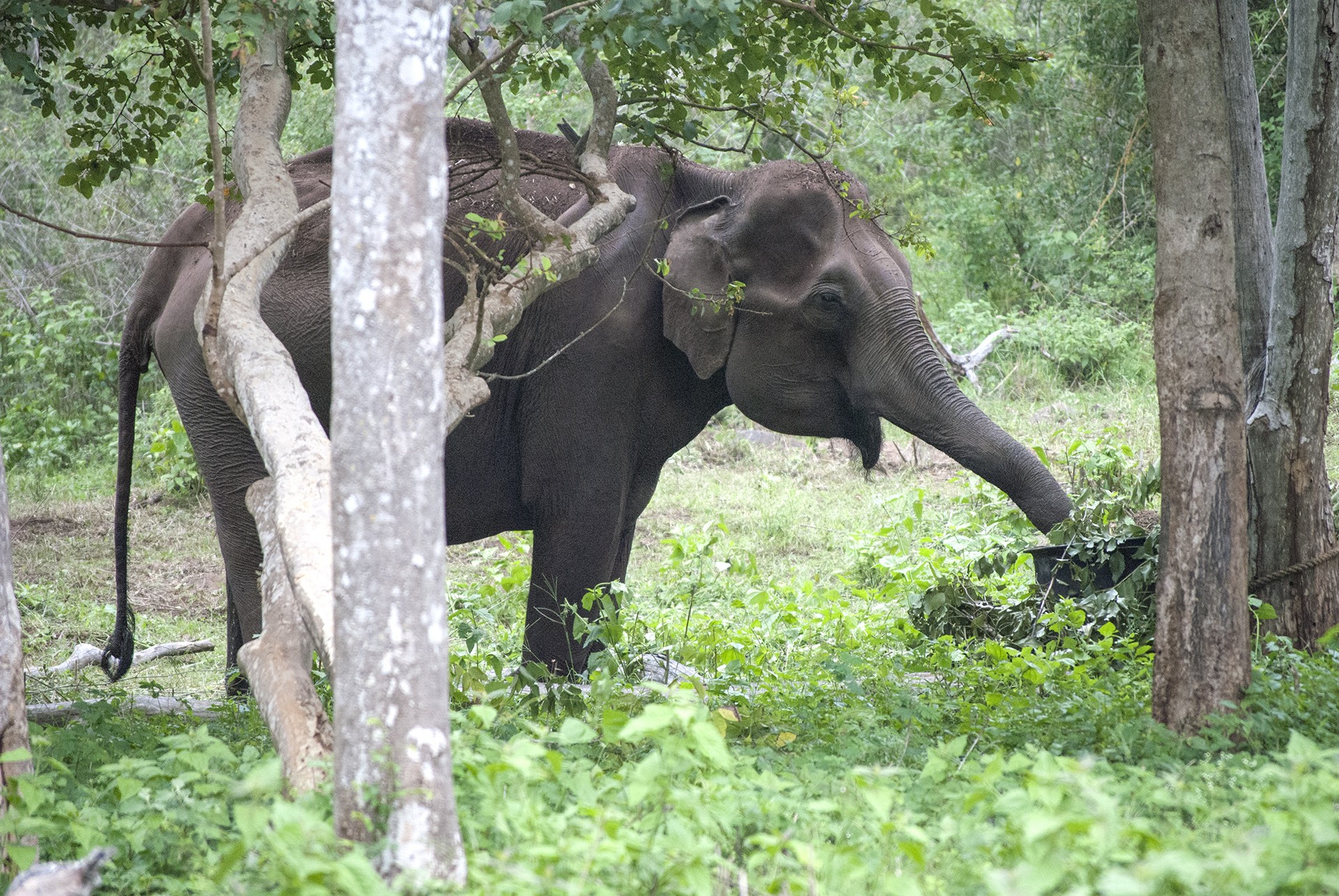“Magnificent!” That’s the very first word that strikes our minds when we hear about elephants. Its in their stature, their behaviour, their complex individuality. Another reason that elephants captivate many onlookers is their strong family bonds. Of these, the most wonderful bond is between a mother and a calf. I was privileged enough to witness two separate incidents that illustrated just how elemental this tie is.
During one of my field days, deep in a dry forest in South India (I’m choosing not to disclose the location) I saw a lone male calf, about a year old, standing in the salt lick under the blazing heat. He was weak and seemed to be dehydrated, and was trying his best to lick the salt. After some time, an adult female appeared and walked towards him. She tried to encourage him to walk by pushing him with her trunk. But he would not, or could not, move. She trumpeted at the calf; in many ways similar to any mother shouting to persuade her child.
When this did not work, the mother nudged her calf with her forehead, slightly harder than before, hoping he would start to walk. This made the calf topple over on the ground. He was too weak to get back on his feet, so she gently nudged him on his back and stood next to him. I could behold the sense of helplessness and agony in her eyes. The calf gently folded his trunk in and flapped his ears back and forth in distress.
After some time, the mother left the calf and moved a few hundred metres away to graze. Meanwhile, with the help of the forest officials, we went close to the calf and tried to get him to drink water. We cooled his body by pouring some water on him. We were startled to see a deep wound on his forehead and on the top of his ear. The wound was concealed beneath the mud. We saw that he must have been attacked by a tiger – its fierce bite had broken the calf’s skull, and a piece of bone hung from his wound.
His flapping ears slowly fell still, and he took his last breath. After an hour or so, his mother returned to his side, trumpeting loudly to the calf. She did not allow any of us to approach, rejecting all help. She gently touched her calf with her trunk, sniffing and smelling him and moving back and forth. She sprayed saliva from her trunk on his body, perhaps in a desperate attempt to cool him off. She must have known that her calf was no longer with her, that he would never get up and walk through her legs again. The onlookers had all fallen quiet.
On the other side of the forest, there was a completely different set of elephant behaviour to witness. A newborn calf, little more than 10 hours old, was struggling to get to his feet. But something was wrong. Every ten to fifteen minutes, its elderly mother, around fifty years old, gently kicked her calf in an attempt to make him stand. Her sisters and daughters stood around her, keeping the calf between them. Even with the support of his mother, aunts, and sisters, his hindlegs failed to support him. But his mother did not leave him alone. She constantly sniffed him and stood next to him.
The forest department officials stepped in to help, along with well-experienced mahouts and a veterinarian. Something exceptional happened when we we approached. Instead of charging, she seemed to back off. There was no sign of panic or aggression from her, as she moved away behind the bush. It was the first time I had seen a wild elephant accepting help from humans.
After some time, we too were about to give up, but his mother held out hope. She kept kicking her calf gently, the other elephants in the herd assisting. The forest officials thought to serve fodder and water to the mother – in her steadfast focus on the calf, she hadn’t had anything to eat or drink for around 12 hours. To our surprise, she readily accepted this favour too.
By then, it was midday. The mother gently started dragging her calf inside the bushes. In the process, the calf fell into a small pit, and his mother’s desperate attempts to get him out were in vain. We thought we could help by moving a log over the pit, so that she could drag her calf out. Again, she backed off as the forest officials approached and tied a rope to one end of the log.
The log was heavy and hard for us to pull. Incredibly, the mother elephant noticed this and started pushing the log from the other side. We couldn’t believe our eyes – a wild elephant displaying such phenomenal cooperation with humans to save her calf.
Unfortunately, in this case too, the calf did not survive. Everyone there felt bereaved to see an animal we all admire die right before our eyes, but that is often the way of nature.
But, in both cases, we saw two mothers display unparalleled dedication and determination to protect their young ones. Both tried their best to make their calves survive. One tried on her own, the other sought help from humans. Both refused to abandon their babies, or give up on them. To this day, I think how happy those mothers would be if their calves were still alive, exploring the wildest part of the forest with them.
